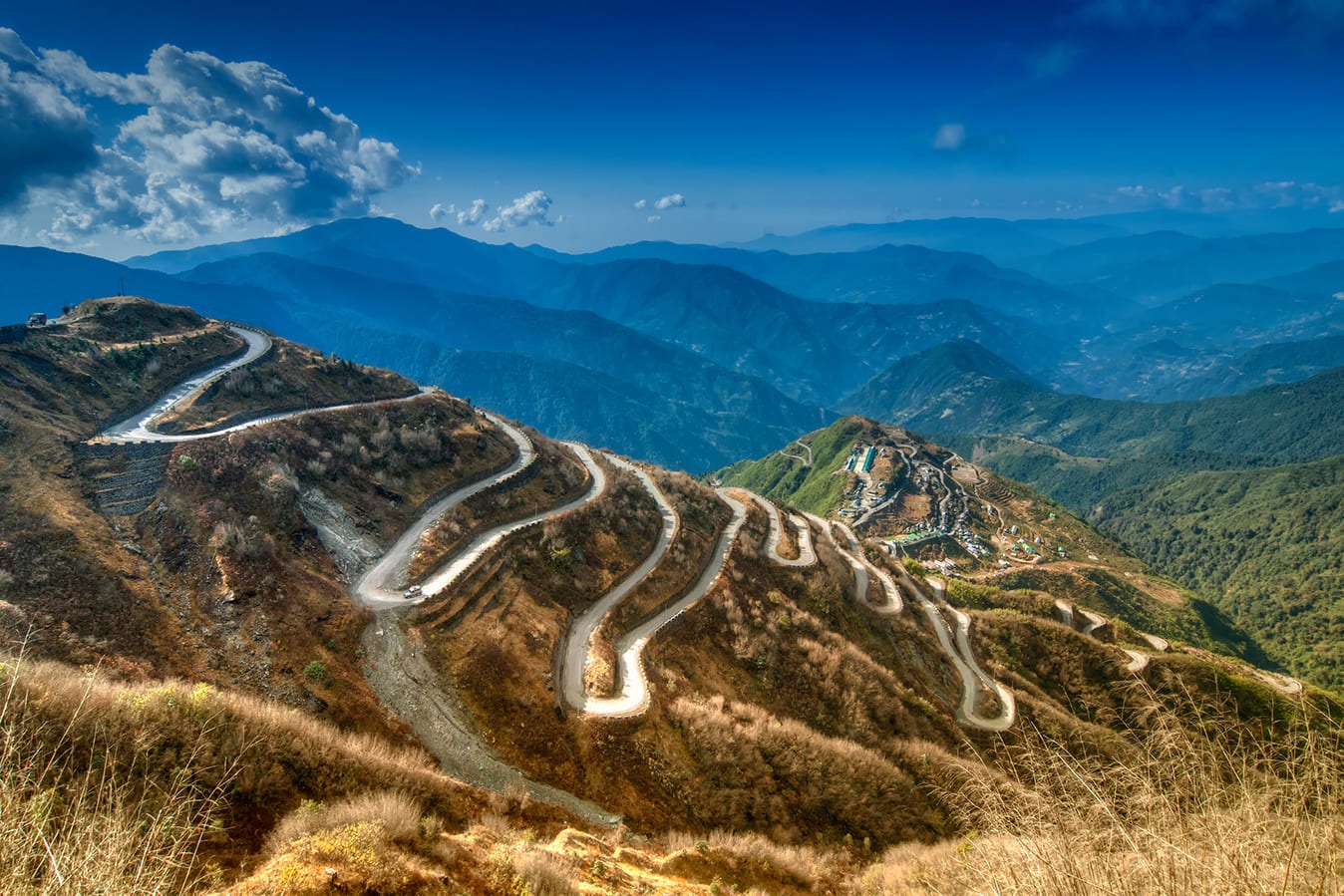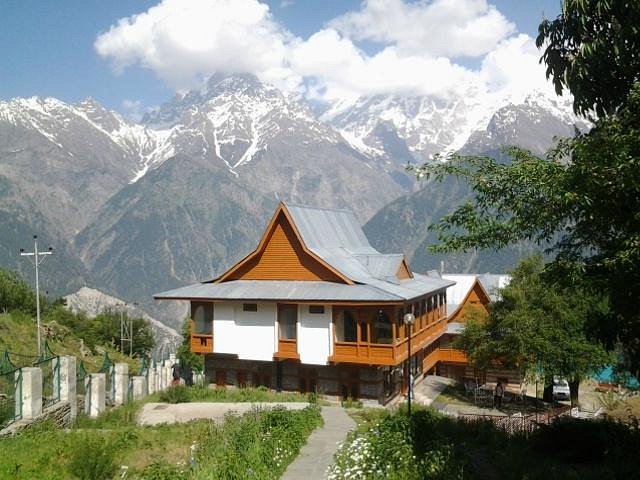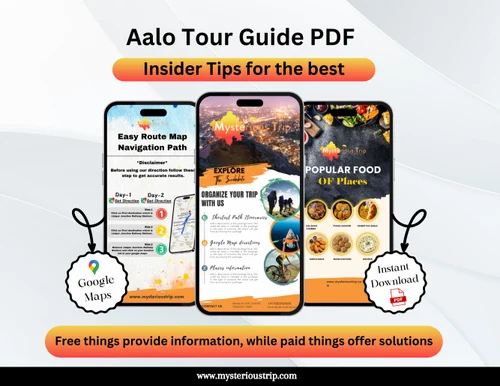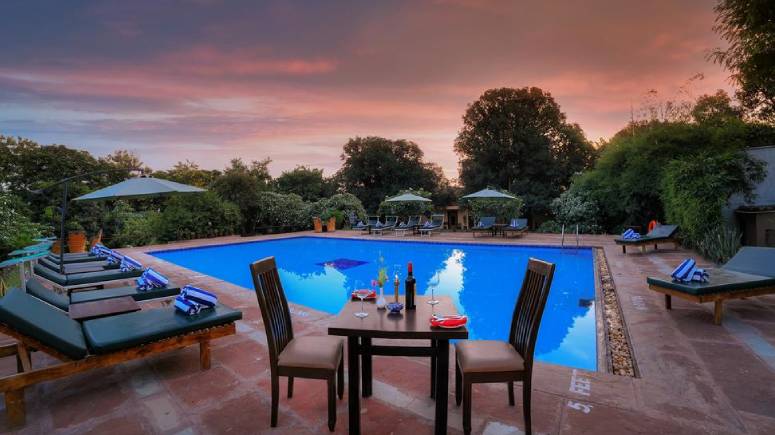
The Silk Route in Sikkim is a historic trade path that connects India with China. This route traverses rugged mountains and offers breathtaking views.
Entwined with the rich tapestry of history and natural beauty, the Silk Route in Sikkim is a traveler’s delight that extends a unique blend of culture and scenic splendor. Once a conduit for silk, spices, and other trade items, this trans-Himalayan passage has evolved into a sought-after destination for adventurers and history enthusiasts alike.
Trailing through East Sikkim, it showcases a pristine landscape dotted with blooming rhododendrons, ancient monasteries, and traditional bazaars. The journey along this route is a mesmerizing experience, revealing panoramic views of Mt. Kanchenjunga and providing a glimpse into the cultural heritage of the region. As tourism flourishes, the Silk Route in Sikkim remains a testament to intercontinental connectivity and ancient trading civilizations.
Silk Route Sikkim: Gateway To Ancient Wonders
Nestled amidst the majestic Himalayas lies a path draped in history, Silk Route Sikkim. This ancient trail winds through the rugged terrain of Sikkim, opening doors to a time when traders and travelers ventured across borders to exchange goods and culture. Today, it beckons those eager to explore the echoes of a bygone era, filled with tales of adventure, trade, and cultural amalgamation.
Historic Significance Of The Silk Route In Sikkim
The Silk Route was more than a mere path; it forged economic and cultural ties between the East and the West. In Sikkim, it served as a crucial trade link, connecting distant lands through the exchange of precious silk, spices, and other goods. Traders endured the challenging journey, contributing to Sikkim’s rich tapestry of history and tradition. This ancient conduit left an indelible mark, shaping Sikkim’s unique identity over centuries.
Geographical Wonders Along The Route
A journey through the Silk Route in Sikkim is a treat for the senses, with natural beauty at every turn. The route is home to breathtaking landscapes, including:
- Lakes: Tranquil waters mirroring the sky, such as the famed Tsomgo Lake.
- Mountains: Towering peaks enveloped in snow and mist, creating postcard-perfect scenery.
- Valleys: Verdant valleys teeming with diverse flora and fauna.
- Passes: Lofty mountain passes offering panoramic views that leave travelers in awe.
This route is not just a journey through space, but also a voyage back in time, uncovering the secrets of nature and the legacies of the past.
Ancient Trade And Cultural Exchange
The Silk Route in Sikkim stands as a testament to the vibrant history of trade and cultural exchange between distant lands. This historic network was not just a set of pathways for merchants, but a bustling avenue for ideas, traditions, and discoveries. It bridged formidable distances and unforgiving terrains to connect civilizations, contributing richly to the cultural fabric of many societies.
Trade Between India And Tibet
Envision towering mountain passes and tough mule caravans, traversing the arduous Himalayas. This was the scene along the Silk Route of Sikkim, a crucial segment in the legendary trade between India and Tibet. Vital commodities exchanged included:
- Textiles: India’s cotton fabrics and silks were coveted in Tibet.
- Tea: Tibetan tea bricks, essential for the cold climate, were brought down to India.
- Medicinal herbs: The Himalayas offered a trove of medicinal resources exchanged for spices.
- Spices and Grains: Indian spices and grains enriched the Tibetan diet.
Seasonal trade fairs in border towns like Nathula and Jelepla became hubs of cross-cultural interaction, reaffirming the Silk Route’s role in facilitating economic relationships through the barter of goods.
Cultural Impact Throughout The Centuries
The Silk Route did more than just foster trade. It became a conduit for the exchange of religions, philosophies, languages, and arts. Monasteries, stupas, and landmarks along the route are living embodiments of this cultural mingling. A brief snapshot:
| Century | Cultural Influence |
|---|---|
| 8th-12th | Buddhism flourishes; monastic schools established. |
| 13th-16th | Artistic exchanges; mural paintings, and crafts develop. |
| 17th-present | Linguistic and cultural assimilations; festivals shared. |
Folk songs, dances, and stories traversed the Silk Route too, entwining the cultural tapestry of Sikkim and neighboring regions. These traditions passed down through generations continue to be celebrated, highlighting the enduring legacy of the ancient trade corridor.
Navigating The Silk Route Today
The ancient Silk Route in Sikkim whispers tales of trade, travel, and cultural exchanges. Modern-day adventurers can still trace this historic path. The journey promises an unrivaled blend of nature, history, and culture. Let’s embark on a virtual tour to explore the current state and tourist pathways of the Silk Route in Sikkim.
Current State Of The Silk Route In Sikkim
Time has transformed the Silk Route in Sikkim. Once a bustling trade corridor, it now offers serene landscapes and a tranquil escape. The route maintains its rugged charm with winding roads and spectacular views.
- Maintained pathways ensure safe travel for tourists and locals.
- Historical sites along the route receive preservation efforts.
- Local communities thrive by sharing their heritage and crafts.
Modern Explorers And The Tourist Pathway
Tourists eager to experience the Silk Route have much to look forward to.
- Eco-friendly homestays dot the scenic landscape.
- Guided tours spotlight the route’s history and natural wonders.
- Travelers engage with authentic Sikkimese culture.
Interactive experiences enrich the journey. Visitors might learn local crafts, savor traditional cuisine, or partake in village festivals. The Silk Route in Sikkim is a living museum that welcomes everyone.
Breathtaking Landscapes And Biodiversity
The serpentine trails through Sikkim’s Silk Route reveal nature in its purest form. Stunning vistas and vibrant ecosystems create a canvas of unmatched beauty. This ancient trade pathway is now a journey through spectacular natural diversity.
Unique Flora And Fauna Of The Region
Sikkim’s Silk Route is a treasure trove of biological wonders. Rare species thrive in its varied altitudes and climates.
- Rhododendrons paint the mountains in vivid hues.
- The elusive Snow Leopard pads through high-altitude regions.
- Red Panda, the state animal, finds sanctuary in the dense canopies.
In meandering rivers, Indigenous fish species dart through crystal waters. Every turn offers a glance into a world brimming with life.
Conservation Efforts To Preserve Natural Beauty
Recognizing the ecological significance of this area, focused conservation strategies are in place.
- Khangchendzonga National Park, a UNESCO World Heritage Site, serves as a critical sanctuary.
- Community-led initiatives encourage sustainable tourism.
- Reforestation drives aim to restore native vegetation.
Such efforts ensure the Silk Route’s landscapes and biodiversity continue to enchant visitors and thrive for generations.
Sikkim’s Silk Route Villages
The ancient Silk Route, once bustling with traders, today weaves through Sikkim’s serene landscapes, connecting a string of quaint villages. These tiny settlements in Sikkim’s Silk Route are not just beautiful but are also rich in culture and history. They offer a unique glimpse into the region’s past and present.
Daily Life In Remote Silk Route Villages
Life in the remote Silk Route villages of Sikkim is a blend of simplicity and hard work. Inhabitants here rise with the sun and are greeted daily by breathtaking views. They tend to their fields, nurture their livestock, and maintain their homes with diligence. Agriculture plays a key role, with corn, rice, and potatoes being main crops. The sense of community is evident – neighbors help each other, sharing the joys and burdens of rural living.
- Children walk to local schools, often trekking across hills.
- Families gather around hearths to share meals and stories.
- Traditional skills such as weaving and handicrafts remain vital in daily life.
Maintaining Traditions In A Modern World
Villagers in Sikkim’s Silk Route have a steadfast dedication to their heritage. Despite the modern world’s advancements, they hold their traditions dear. Colorful festivals infuse life into these communities, showcasing vibrant dances and songs passed down through generations. Moreover, local cuisine, with its unique flavors, continues to be prepared as it has been for centuries.
| Festival | Activity |
|---|---|
| Losar | New Year Celebrations |
| Dasain | Harvest festival |
Artisans skillfully craft traditional wares, keeping their ancestral methods alive. Monasteries and shrines remain as community pillars, providing spiritual guidance and education. Despite the ever-present lure of modernization, Sikkim’s Silk Route villages stand as proud sentinels of history, safeguarding the legacy of their ancestors.
Spiritual Destinations Along The Route
The ancient Silk Route in Sikkim is more than a passageway for traders of yore. It is a path steeped in spirituality. The route bestows serenity upon travelers who meander through its high passes, seeking spiritual solace and enlightenment. Wonders await at every turn, specifically in the form of sacred monasteries and shrines. They offer a glimpse into the devout heart of Sikkim. Each destination presents a moment in history and a chance for visitors to connect with their spiritual selves.
Monasteries And Shrines Steeped In History
Tales of ancient lore echo through the halls of Sikkim’s revered monasteries. These sites have endured the test of time. Resilient and serene, they invite pilgrims and tourists to partake in their peacefulness. Magnificent structures like Rumtek Monastery boast intricate designs and hold centuries of history within their walls. Visitors are often spellbound by the vibrancy of murals, the exuberance of festivals, and the quiet meditative atmosphere of these sites.
- Pemayangtse Monastery: One of the oldest in Sikkim, it promises a peek into the past.
- Tashiding Monastery: Known for the sacred Bumchu Festival, it is a spiritual magnet for believers.
- Enchey Monastery: Set amidst serene woods, it’s a beautiful escape for reflection and prayer.
Pilgrimage And Spiritual Tourism In Sikkim
The spiritual journey through Sikkim encompasses a fusion of culture, devotion, and nature. Thousands gather for vibrant festivals and quiet meditation. Travelers seek blessings or simply admire the devotion encapsulated within these sacred walls. Sikkim’s commitment to spiritual tourism is evident in the well-maintained paths leading to these sanctified places. The state recognizes these destinations as crucial to its heritage, ensuring that they remain accessible to all.
- Observe colorful processions at monastery festivals.
- Join in the communal prayers that resonate through the mountain air.
- Experience traditional rituals and gain insights into Buddhist philosophy.
With each monastery visit or participation in spiritual events, visitors carry away a piece of Sikkim’s soul. These encounters are not just tours but journeys of inner discovery and tranquility.
Adventures And Treks On The Silk Route
Embarking on the Silk Route in Sikkim is a dream for many travelers. It’s a journey filled with breathtaking landscapes, rich history, and thrilling adventures. This section will dive into the heart-pumping routes and activities that make the Silk Route a treasure for trek enthusiasts and adrenaline junkies alike.
Popular Treks And Must-visit Spots
Lush trails and historical footprints welcome you in Sikkim. The Silk Route offers a myriad of paths, each leading to an unforgettable experience. Explore these trekking havens:
- Tholung Trek – Venture through dense forests and serene monasteries.
- Zuluk Loop – Witness a breathtaking, winding trail with panoramic views.
- Menmecho Lake – Revel in the tranquil vibes by this crystal-clear water body.
Each trail promises captivating vistas and a chance to encounter Sikkim’s vibrant culture.
| Trek Name | Duration | Difficulty |
|---|---|---|
| Tholung Trek | 3-4 days | Moderate |
| Zuluk Loop | 2-3 days | Easy to Moderate |
| Menmecho Lake | 1 day | Easy |
Thrill-seeking Activities For Adventure Lovers
For those craving adrenaline, the Silk Route delivers. Excite your senses with these activities:
- Mountain Biking – Challenge the rugged terrains with your bike.
- Paragliding – Soar like a bird over the majestic landscapes.
- Yak Safari – Explore the high altitudes in a unique manner.
All these enthralling options inject an extra dose of adventure into your Silk Route journey.
Cuisine And Culinary Delights Of Sikkim
Sikkim, a jewel in the Northeast of India, enchants visitors not only with its stunning landscapes but also with its rich culinary heritage. Sikkim’s unique location has shaped a distinctive food culture that leaves food lovers in awe. We delve into the traditional tastes and historical influences on the cuisine of this Himalayan wonderland.
Taste Of Traditional Sikkimese Food
The heart of Sikkim’s cuisine lies in its simplicity and depth of flavors. Local ingredients like buckwheat, millet, and barley dominate. The star of Sikkim’s table is the famed ‘Momo’, a steamed dumpling filled with veggies or meat. Let’s taste some traditional dishes:
- Thukpa: A comforting noodle soup, perfect for chilly days.
- Phagshapa: Strip of pork fat stewed with radishes.
- Sel Roti: A sweet, ring-shaped rice bread.
- Gundruk: Fermented leafy greens, a Sikkimese staple.
- Sinki: A preserved radish taproot, often used in soups.
Visitors savor these delights with home-brewed millet beer called ‘Chang’, sipped through bamboo straws.
Influence Of Historic Trade On Local Cuisine
The ancient Silk Route wound its way through Sikkim, weaving a rich tapestry of flavors into local food. Traders brought spices, new vegetables, and cooking techniques from distant lands. The result? A fusion of flavors that linger on the palate.
| Cuisine Element | Origin | Influence |
|---|---|---|
| Spices | Central Asia and beyond | Introduced warmth and complexity to Sikkimese dishes |
| Dairy Products | Tibet | Adopted in the form of cheese and butter in many dishes |
| Rice Varieties | Southeast Asia | Expanded the staple diet beyond the traditional grains |
This mingling of ingredients created signature dishes like ‘Kinema Curry’ and ‘Sha Phaley’. Such dishes speak of a history as fascinating as the land itself.
Sustaining The Silk Route’s Heritage
The Silk Route in Sikkim stands as a mesmerizing testament to the ancient trade links between India and China. Sustaining its heritage has become imperative to keep this rich past alive. This initiative encompasses preserving physical remnants and bolstering local economies through tourism.
Preservation Of Historic Sites And Routes
Custodians of history work tirelessly to maintain the Silk Route’s integrity in Sikkim. Key interventions include:
- Restoring old trade paths and watchtowers.
- Conservation of historical artifacts found along the route.
- Collaboration with local communities to preserve traditions.
These efforts ensure future generations can witness and learn from this cultural treasure. Rigid adherence to conservation guidelines helps retain authenticity.
Role Of Tourism In The Economy And Heritage
Tourism brings a dual benefit to the Silk Route. Local economies thrive as tourism
- Creates jobs in hospitality and guidance.
- Promotes handicrafts and local products.
- Sustains traditional practices by making them lucrative.
Responsible tourism educates travelers on the importance of heritage while fueling economic sustainability.
By embracing the Silk Route’s heritage, Sikkim not only celebrates its past but also paves the way for a prosperous future.
Planning Your Silk Route Expedition
Sikkim’s Silk Route is a historical marvel and an adventurer’s delight. Chart a journey across this ancient trade path that once connected India to Tibet. Stunning landscapes await as you traverse this path of history and culture. Ready to embark on the Silk Route Sikkim expedition? Here are the essentials.
Essential Travel Tips For Visitors
Exploring the Silk Route requires smart planning. These tips will help ensure your journey is memorable and safe:
- Permit Required: The Silk Route lies in a sensitive border area. You must secure a special permit to visit.
- Stay Connected: Mobile networks can be patchy. Carry a local SIM for better connectivity.
- Respect the Locale: Be mindful of local customs and ecological sensibilities.
- Guided Tours: Opt for a local guide. Their knowledge enriches your experience.
- High Altitude Precautions: The route has high-altitude zones. Acclimatize and stay hydrated.
Best Time To Explore And What To Prepare
Choosing the right season and packing efficiently are crucial for your Silk Route journey. Heed the following advice:
| Season | Weather | Preparation |
|---|---|---|
| March to June | Pleasant | Light clothing, sunscreen |
| October to December | Cool with clear skies | Warm layers, hats, gloves |
Avoid monsoon months due to landslides. Always carry essentials like a first-aid kit, maps, and a compass. Comfortable trekking shoes and a sturdy backpack are must-haves. Remember to start your days early to make the most of the daylight hours.
Frequently Asked Questions Of Silk Route Sikkim
Is Zuluk And Silk Route Same?
Zuluk is a location on the historic Silk Route in Sikkim. The Silk Route, however, refers to the ancient network of trade paths across Asia, not just Zuluk.
What Is Special About Zuluk In Sikkim?
Zuluk in Sikkim is renowned for its winding roads, offering scenic views of the Eastern Himalayas. This small village is a unique stop on the historic Silk Route, attracting tourists with its untouched natural beauty and strategic viewpoints like Thambi View Point.
What Is The Best Time To Visit Silk Route?
The best time to visit the Silk Route is from April to June, and September to November, offering pleasant weather and scenic beauty.
How Far Is Silk Route From Siliguri?
The Silk Route is approximately 560 kilometers from Siliguri, which is roughly a 14-hour drive via National Highway 10.
Conclusion
Embarking on the Silk Route in Sikkim is a journey through time. The winding paths and scenic vistas tell tales of ancient traders. Explore this historic trail for a blend of culture, adventure, and heritage. Sikkim’s Silk Route awaits, promising memories that resonate with the echoes of a storied past.
Embrace the adventure!





